第62章
So much then of the gall-bladder, and of the reasons why some animals have one, while others have not. We have still to speak of the mesentery and the omentum; for these are associated with the parts already described and contained in the same cavity. The omentum, then, is a membrane containing fat; the fat being suet or lard, according as the fat of the animal generally is of the former or latter description. What kinds of animals are so distinguished has been already set forth in an earlier part of this treatise. This membrane, alike in animals that have a single and in those that have a multiple stomach, grows from the middle of that organ, along a line which is marked on it like a seam. Thus attached, it covers the rest of the stomach and the greater part of the bowels, and this alike in all sanguineous animals, whether they live on land or in water. Now the development of this part into such a form as has been described is the result of necessity. For, whenever solid and fluid are mixed together and heated, the surface invariably becomes membranous and skin-like. But the region in which the omentum lies is full of nutriment of such a mixed character. Moreover, in consequence of the close texture of the membrane, that portion of the sanguineous nutriment will alone filter into it which is of a greasy character; for this portion is composed of the finest particles; and when it has so filtered in, it will be concocted by the heat of the part, and will be converted into suet or lard, and will not acquire a flesh-like or sanguineous constitution. The development, then, of the omentum is simply the result of necessity. But when once formed, it is used by nature for an end, namely, to facilitate and to hasten the concoction of food. For all that is hot aids concoction; and fat is hot, and the omentum is fat. This too explains why it hangs from the middle of the stomach; for the upper part of the stomach has no need of it, being assisted in concoction by the adjacent liver. Thus much as concerns the omentum.